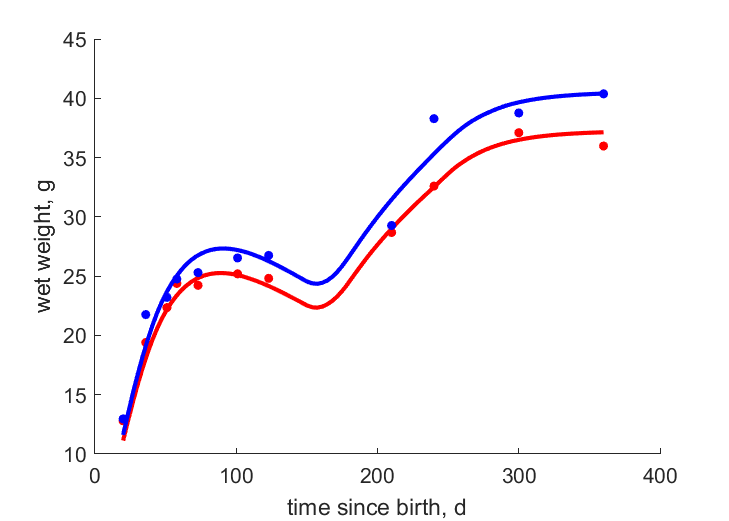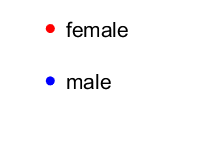Predictions & Data for this entry
| Model: stx | climate: Dfc, Dfd | migrate: | phylum: |
| COMPLETE = 2.4 | ecozone: THp | food: bxM, xiH, xiCii | class: |
| MRE = 0.024 | habitat: 0iTd, 0iTa, 0iTh | gender: Dg | order: |
| SMSE = 0.001 | embryo: Tv | reprod: O | family: |
Zero-variate data
| Data | Observed | Predicted | (RE) | Unit | Description | Reference |
|---|---|---|---|---|---|---|
| tg | 18.5 | 18.45 | (0.002511) | d | gestation time | KaneNaka1998 |
| tx | 17 | 17.07 | (0.004154) | d | time since birth at weaning | KaneNaka1998 |
| tp | 45 | 44.26 | (0.01644) | d | time since birth at puberty for female | KaneNaka1998 |
| am | 1204 | 1205 | (0.0006642) | d | life span | AnAge |
| Wwb | 2 | 2.027 | (0.01364) | g | wet weight at birth | KaneNaka1998 |
| Wwx | 10 | 9.9 | (0.009973) | g | wet weight at waening | AnAge |
| Wwp | 22.5 | 23.05 | (0.02433) | g | wet weight at puberty | KaneNaka1998 |
| Ri | 0.04521 | 0.04548 | (0.006132) | #/d | maximum reprod rate | KaneNaka1998, AnAge |
Uni- and bivariate data
| Data | Figure | Independent variable | Dependent variable | (RE) | Reference |
|---|---|---|---|---|---|
| tWw_f |   | time since birth | wet weight | (0.02677) | Abe1976 |
| tWw_m |   | time since birth | wet weight | (0.04374) | Abe1976 |
Pseudo-data at Tref = 20°C
| Data | Generalised animal | Myodes rufocanus | Unit | Description |
|---|---|---|---|---|
| v | 0.02 | 0.0263 | cm/d | energy conductance |
| kap | 0.8 | 0.9611 | - | allocation fraction to soma |
| kap_R | 0.95 | 0.95 | - | reproduction efficiency |
| p_M | 18 | 4034 | J/d.cm^3 | vol-spec som maint |
| k_J | 0.002 | 0.002 | 1/d | maturity maint rate coefficient |
| kap_G | 0.8 | 0.8001 | - | growth efficiency |
| t_0 | 0 | 7.279 | d | time at start development |
Discussion
- males are assumed to differ from females by {p_Am} only
- food availability is assumed to vary in time
- mod_1: males have equal state variables at b, compared to females
Bibliography